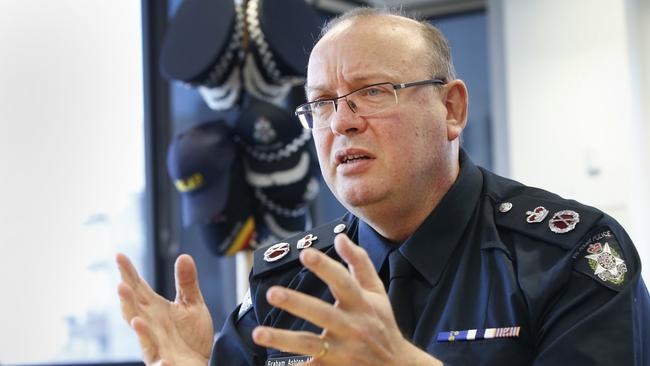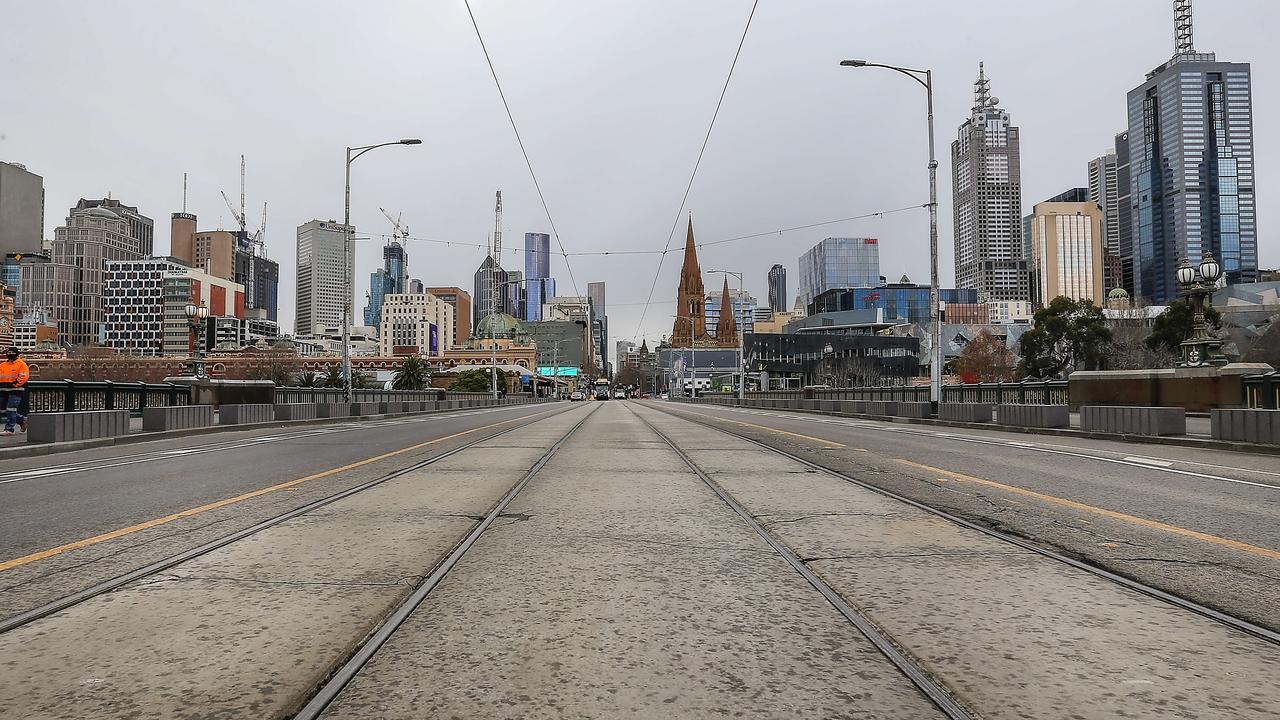Bold direction for blue line
MODERN policing can never remain stagnant — it must adapt with changing times and crimes.

Opinion
Don't miss out on the headlines from Opinion. Followed categories will be added to My News.
MODERN policing can never remain stagnant — it must adapt with changing times and crimes.
Victoria has one of the best police forces anywhere in the world and its current leadership, under Chief Commissioner Graham Ashton, has the support of the community.
But the force is stretched, its structural efficiency is being questioned and new ideas are needed to tackle, particularly the violent youth crime wave, and to revitalise the organisation.
Many frontline police are the first to concede they feel buried by excessive paperwork and tied to computers when the priority should be on the street, together with a sense bureaucracy has overshadowed local policing. In a survey last year, some officers claimed they were regularly unable for more than an hour to attend calls where lives could potentially be at risk due to workload and personnel shortages.
Another 2729 new police recruits over four years are now in the pipeline and 10 stations are being rebuilt, with a focus on growth corridors. But Victoria has endured a 31 per cent rise in assaults and aggravated robbery over the past two years, a 64 per cent jump in aggravated burglaries and 44 per cent increase in car thefts.
Force command has readdressed contentious pursuit policies and has hit back at a previous claims of “risk-averse” policing.
Mr Ashton should look closely at the proposals outlined in today’s Herald Sun as a response to the state’s crime woes. The Community Advocacy Alliance’s PLAN 100 — backed by the Opposition — is a comprehensive list of recommendations formed by a well-respected group of former senior police, including chief commissioner Kelvin Glare.
Among the recommendations are police response time benchmarks for high-priority call-outs.
The modern wave of migrant or first-generation migrant youth crime is a major area of concern and needs to be tackled head-on. Some advances have been made but the recommendation for greater communication between police and immigration authorities over crime by non-citizens is sensible.
A number of the CAA recommendations have been successful in other jurisdictions.
The hard line approach champions New York’s so-called “Broken Window Philosophy” — zero-tolerance to “petty” crimes such as graffiti and smashed windows to prevent young criminals from continuing on to more serious offending. The alliance also calls for a reversal of the police “super stations” concept in favour of local stations closely tied to their communities.
As Mr Ashton has previously said “we are always looking for good ideas’’.
The Chief should consider those contained in the CAA blueprint.
AFL HIGH TO PRISON LOW
ONCE a promising West Coast footballer, Ben Sharp’s downfall into drugs and crime this week ended with a nine-year jail term for armed robbery.
It would be wrong to claim a drug soaked culture at the Eagles was solely to blame for the 30-year-old’s life running off the rails. But when you combine Sharp’s story, in which the County Court heard he was pressured into taking drugs during his playing days, with the shock findings of the Gillard report, it is apparent real damage was done during those formative rookie years.
Sharp arrived as a recruit at West Coast and returned to Victoria a drug addict. He is named by former judge William Gillard in his once-secret investigation as being among players subjected to a culture where winning was everything and the club would “ignore any suggestion of drug-taking”. The contents of the Gillard report were revealed last month by the Herald Sun, despite former AFL chief Andrew Demetriou and chairman Mike Fitzpatrick failing to release it for nine years.
The Eagles’s glory days around their 2006 premiership are now tarnished and the then playing list is littered with personal tragedies.
Drug addict Ben Cousins is in jail and players including Daniel Chick, Chad Fletcher and Daniel Kerr have all had their demons. Meanwhile, long-term West Coast chief executive Trevor Nisbett remains in his role and former Eagles coach John Worsfold now has the job at Essendon.
Although both claimed they were unable to act during the period on rumour or had been lied to when confronting players, the Gillard report is highly critical of team management, finding a “covering-up approach … without confronting the real cause and seeking to eradicate it”. Certainly, players must accept individual responsibility and criminal behaviour can’t be excused. But in the competitive world of sport, older and more experienced coaches and management have a duty of care to help reign in the recklessness and arrogance of some young athletes.
The Gillard report says of 28 positive drug tests in 2005-06, West Coast was “equally worst in the AFL”.
Which begs the question, what was the other team and have some of its former players also now hit rock bottom?


